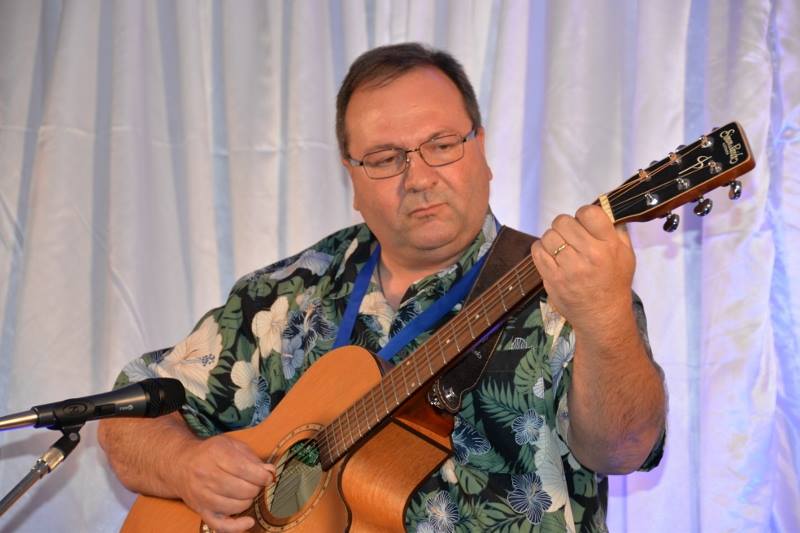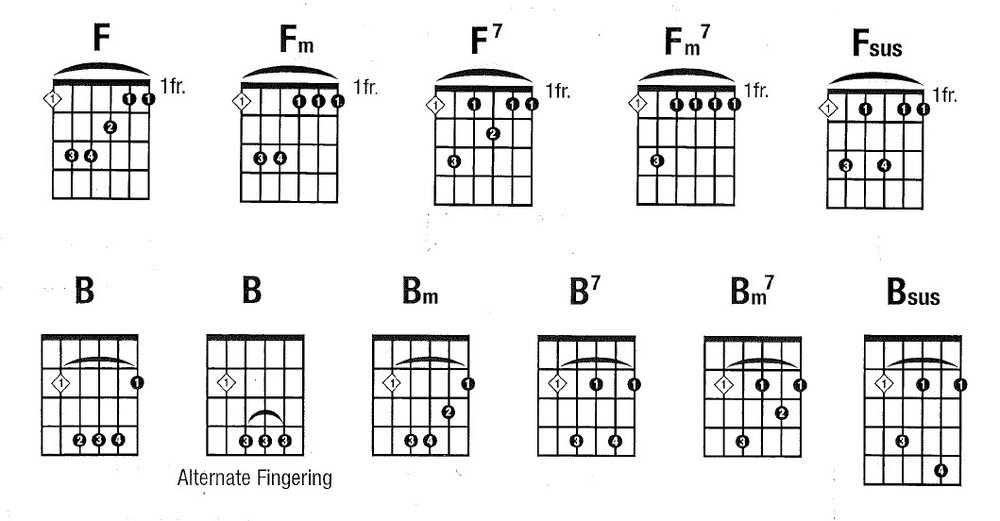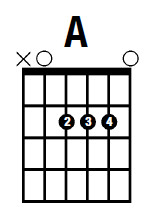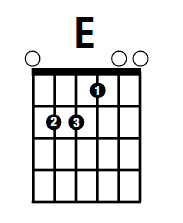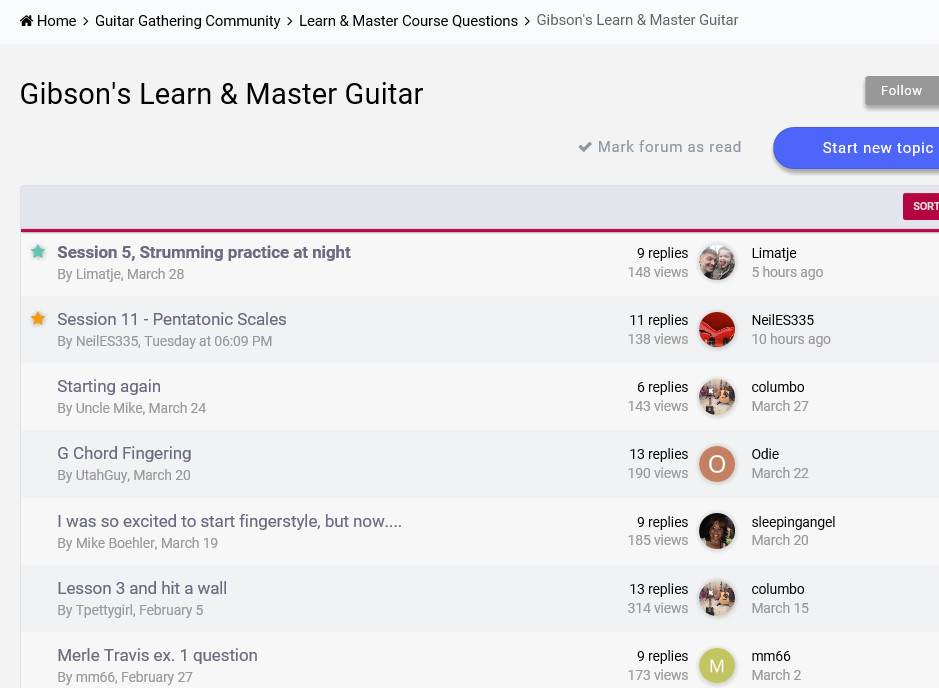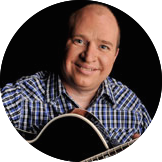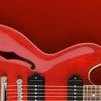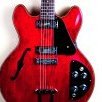-
Posts
1,134 -
Joined
-
Last visited
-
Days Won
179
Content Type
Profiles
Forums
Gallery
Events
Articles
Blogs
Downloads
Community Map
Everything posted by Eracer_Team-DougH
-

Torn Ligaments in my Left hand may need surgery :(
Eracer_Team-DougH replied to sleepingangel's topic in Guitar Open Talk
your body seems to let you down a lot.. voice, now the hand (forget what else).. you'll need some physio to get going again with those reattached tendons. hopefully it heals pain free for you to start playing again in the future. guess this gives you time to 'brush' up on your theory side of things. maybe even write a few songs while waiting -

Spiral Bound Song Hits Lesson Book
Eracer_Team-DougH replied to Night Watchman's topic in Learn & Master Song Hits
Take it to staples, pay $2 have then cut the spine off the book. Then use a 3 hole punch and binder Maybe if you're lucky they'll trim it down as much as they can as it's not a 8.5x11 page Steve had copywrite issues hence no pdf only hard copy -
I had a big reply typed.. don't think I need too. Jazz.. I know there are a bunch of posts above on it, but hard 4 finger chords with long finger stretches that most will struggle with plus the acquired taste for jazz.. not sure if Jazz is a way to go... I know it's your passion. Neil hit it on the head.. need a Learn Guitar main course redone, with more content in some sessions (IE session 13 is pretty sparse) and stream-line the regular and 'bonus' double disk session thing. bottom line.. people want to play songs, Hal Leonard Easy Pop is too simple sounding.. many TAB books are hard and take months to get even 1 song down. needs to be a bridge somewhere. bonus supplements for songs could help us progress in getting those "first 10 songs we could play in a coffee shop " type of deal.. [edit] let me explain the above thoughts. 1- Guitar Gathering Learn Guitar by Steve K. marketed by Steve/Guitar Gathering.. I don't see a future in the other companies marketing approach to LMG and sub-series. (the main LMG course brought us here together in guitar camaraderie with LMG as the main source) 2- Workouts; the Workouts are great spotlighting a specific item. Speed/Agility, Fret-board and Jazz workouts. great additions to a already existing main course. -spot lights could include: a) Classic Rock.. Session 13 of LMG is really small, and needs expansion. Classic Rock is a wide spectrum and can be grouped into different workouts in Decades.. 60's , 70's , 80's , etc.. pick a style for each group, don't over complicate the instructions, could have a Here's how to play say 60's Stone's Satisfaction, Jack Flash ,, 70's Stairway, Smoke on the Water, Walk this Way. 80's Sweet Child 'O Mine, Amanda etc. Level 1 here's a simple version, to sound ok at a family gathering, Level 2 detailed versions to play at bar band or coffee shop level, Level 3,, here's the theory behind these songs; since I know you like the theory approach to music. (check with GG forum member Six String.. he's in a band and currently learning 33 songs for a concert, he'd be a good gauge on what songs to teach) b) Expanded Jazz Songs.. why.. you like Jazz, a number of others on the forum like Jazz, the sounds are very colourful. c) Blues .. Yes I know you have a blues course; by the other company.. tried as I might to get past session 3 but got bogged down in the theory side of things. again.. another big wide brush. Delta Blues vs Chicago/Memphis Blues vs British Blues. lots of choices in each.. again Level 1.. sound good at family function. Level 2 bar band good, Level 3.. theory level of the songs. d) Finger Style.. why.. you love finger style as much as Jazz.. but can be broking into Classical and General styles (yes you have a Finger Style course that covers lots of this already,,, again marketed by that other company) I'm not sure how other web instructors "get away" with teaching popular songs without too much copy-write infringement.. think you'll know this a lot better than I ever will so my thinking is on the 3 level 20min each work out as you've been doing but.. L1 -ok for family/campfire, L2 -ok for bar/coffee-shop bands, L3 -the theory side. What do I like about Legacy's Song Hits.. I love that you gave us the 'history' of the song before you taught it.. gives me some insight to the song. last thought.. if it's physical resources you search for (other peoples) as I stated.. Hal Leonard's Easy Pop, single melody lines are very simple sounding.. big TAB books like Bonamassa and Rush, etc are pretty hard overall and required commitment to the song over time.. need books that are somewhere in the middle of those two concepts. Make you sound great but not overly complicated.
-

New Original - "Come and Be Blessed"
Eracer_Team-DougH replied to CapM's topic in Guitar Playing & Technique
sounds like a pretty good 'pro style' sound. when I record straight into my system.. it sounds lame, guess I need to spend more time recording to make it sound more polished like yours -
yes this is a few years old but it helps to have the amp at 6-8 on the volume, then you can play with the volume and tone. notice he's using a Fender tube amp. if you're playing the amp on 1 or 2 cause of the neighbors it's not going to sound the same and not drive up into over drive when you bring the guitar volume up.
-

Session 10 - Fingerstyle Guitar
Eracer_Team-DougH replied to NeilES335's topic in Gibson's Learn & Master Guitar
Like many of you, I've jumped around a bit. Bit of S11, bit of S13, bit if S15 Playing in choir past 4yrs has made session 9 kind of boring. Except those single notes with the Jam CDs on fast Although I know Session 10 can and is a rabbit hole, I'm going to start to squeeze in S10 in between Choir songs, and other songs I'm trying to learn. Now if only caffeine or Red Blue would keep me awake longer each day -

Joe Bonamasa Pentatonic Sequences
Eracer_Team-DougH replied to Grog's topic in Guitar Playing & Technique
The number of videos with Bonamassa may drastically be reduced in the next coming weeks. Bonamassa office has posted on their forum that YouTube is cracking down on video with him. The long term fans with vids are currently pulling all their videos before YouTube police get them -

Session 12 - Advanced Chords
Eracer_Team-DougH replied to NeilES335's topic in Gibson's Learn & Master Guitar
@matonanjin I believe Neil is closer to Session 17. I'm glad Neil has taken my prodding to complete LMG. I believe he could be finished before end of year. -

New Original - "Come and Be Blessed"
Eracer_Team-DougH replied to CapM's topic in Guitar Playing & Technique
"Funny" "profound"?? I'm In 2 different choirs at church, had thought of writing my own song to perform during my children's choir. I'm driving I'll listen to yours when i get home -

taylor The Ebony Project - Taylor Guitar
Eracer_Team-DougH replied to Randy120's topic in Guitar Open Talk
@NeilES335 too bad you didn't come to LM downtown with me on the Taylor show. They had that mixed ebony guitar there.... nice -

Playing with Grammy Nominated Michele Pillar
Eracer_Team-DougH replied to Steve Krenz's topic in Guitar Open Talk
"Break a leg " Steve -
When I was 5 in 1965, we got our first working toillet (before that a 5gal bucket for the cold days or the "house " 300 feet in the Bush.) Also in 1965 we got our first TV with 1 whole channel (CBC) I know there was hockey night in canada but I didn't watch that. I knew Ed Sullivan on Sunday nights. In 1967 I saw my first working bath tub drain (ours you scooped the water in and out with a bucket) Wasn't till 1974 when we moved to the big city I found Star Trek (already 7 years into re-runs) Can't really tell you anything of Roy Roger's or his "Trigger" man side kick. Nothing about Howdy Doody Time or barely anything about Leave it to Beaver, except it was Lumpy's fault.
-
Sadly I'm not finished, guess I'll try for the birthday CD in July.
-
@Cort23 @matonanjin I'm pretty sure Barb who goes every year, has responded to similar question in alternate threads. 2017 Steve stepped up the amount to play time and more guest instructors. But I want there in 2017. Maybe if I tag her @K9kaos she can add what to expect this year in 2018 for an intermediant/beginner And from what I can see from the schedule even more. http://www.guitargathering2018.com I would say go if you can. Learn you will
-

Guitar Gathering Canadian Members Forum
Eracer_Team-DougH replied to NeilES335's topic in Guitar Open Talk
Combined shipping. Dave it only works if the person heading across the border doesnt do a couple of things. 1 charge you a part of the gas/tolls etc fees. 2 stays long enough over there so when they claim the material its duty free. Did this once with someone. By the time the gas and declared duty was added up. It would have been faster (and cheaper) just to ship to my house here -

Session 7 - Barre Chords on the 6th String
Eracer_Team-DougH replied to NeilES335's topic in Gibson's Learn & Master Guitar
actually I'm a bit confused by your question.. In Learn and Master Guitar Session 7 there are only 5 shapes of Barre Chords.. F, Fm. F7, Fm7 and Fsus... all of these are moveable on the sixth string root. if you can make a E Barre sixth string (that would be on the 12th fret) then sliding that back down to 5th fret A or 1st fret F.. it's all the same shape. if you add Session 8 in the mix with the 5th String Root.. you have 5 moveable chords B, Bm, B7, Bm7, Bsus again these are moveable and take the same shape as you move up the neck.. above the 7th fret E on 5th string.. then the full barre gets a little tight barring the 6th fret and squishing the 3 fingers in there on the 8th fret. so many (including me) use a 2 finger barre version up higher on the neck. I'm suspecting you're actually talking about LMG Session 5 Basic Open Chords, where an E chord is one fingering set , and where the A Chord is using 3 fingers on the 2nd fret, strings 2/3/4... yes the Open A basic chord is tough to learn at first. the other thing is adding the CAGED reference I think is a bit confusing as well as it takes a slight different approach to chords -
Remember think blues Flatted 3,5,7 So not a D# but an Eb
-

The old community Session Questions.
Eracer_Team-DougH replied to The deuce's topic in Guitar Open Talk
we it'd be a very long task for someone to 'clip'n'paste' all that information over there over here. but we do have a Learn and Master sub section here.. and although it might be helpful to have 'sticky' the topics Session 1 ~20.. there are those that are currently posting in Learn and Master Guitar section of this forum.. so new forum sections can be made and populated https://www.guitargathering.com/community/index.php?/forum/12-gibsons-learn-master-guitar/ -

Guitar Gathering Canadian Members Forum
Eracer_Team-DougH replied to NeilES335's topic in Guitar Open Talk
Hank... I always sound better after the audience has been drinking for a while -

Guitar Gathering Canadian Members Forum
Eracer_Team-DougH replied to NeilES335's topic in Guitar Open Talk
I'm in Brampton.. Ontario (just northwest of Toronto) about 10min away from Neil I know that there are a number of members in or near Hamilton.. and one in St Catherine's plus someone near Listowel; besides GTA we've batted a few time around a Toronto-GTA Jam with Ron , you and I.. but I think if we 'rally the troups' we could possibly get a Sunday jam in sometime for a Southern Ontario Gathering -

Session 5, Strumming practice at night
Eracer_Team-DougH replied to Limatje's topic in Guitar Playing & Technique
Finishing session 4 and esp 4b in more than enough reason to buy a guitar... Esp electric -

Session 11 - Pentatonic Scales
Eracer_Team-DougH replied to NeilES335's topic in Gibson's Learn & Master Guitar
Where is the jealous envy button You won't even want to jam with me anymore ... I know I have a way to go somewhere... but I know in short order you can finish the LMG course (Although we should schedule another jam.. but currently looking much into May) -
Could be a capacitor in it or maybe a transistor. You'll need to get it fixed
-
PS there was a Learn and Master Rock Hits that Legacy produced from all the Gibson Skills House players and not produced from Steve although I think Legacy used the same sort of naming as in Learn and Master Rock Hits. it didn't follow a step by step instruction that we're used to getting from Steve K.

